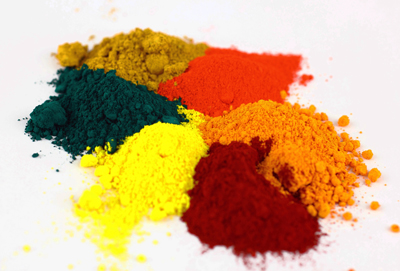 By Kathi Miller, McElroy Metal
By Kathi Miller, McElroy Metal
More is better, right? For many architects and building owners, the decision of three-coat vs. two-coat paint systems certainly isn’t black and white.
What’s the Difference?
As the name implies, one system has three layers of coating (or film), and the other consists of two coating layers.
Most often, a two-coat system includes the primer and a top coat whereas three-coat systems include the primer, top coat, and a third coating (most often a clear coat) that is applied over the top.
So while the apparent difference involves the number of coating layers, there are other important differences. When the coatings are applied, two-coat systems can be produced in one pass through commercial coil coating lines, whereas three-coat systems
routinely require a second pass through the coating lines.
Additionally, two-coat systems tend to be industry standard for most manufacturers, while three-coat systems are most often considered a special order. As you might guess, these last two nuances can carry both cost and lead-time implications.
 Are Three-Coat Systems Necessary?
Are Three-Coat Systems Necessary?
For the vast majority of colors, a two-coat PVDF system of a primer and a topcoat are sufficient. There are, however, times when a three-coat PVDF system — primer, color coat and clear — coat is necessary to improve the color retention and
chalk resistance of the solid color or metalescent base color.
Saturated colors like reds, oranges, and purples are good examples of colors that may benefit from the addition of a clear coat. A clear coat may also be needed for some metallic colors, like bright silvers, to protect the aluminum flake from losing its
brightness and turning dark. Lastly, there are some special effect coatings available on the market that may also require three-coats; a primer, a base color coat, and an effect coating. Click here to learn more about this unique group of products.
Outside of these situations (saturated colors like reds, oranges, and purple; bright silvers and special effect coatings), three-coat systems are rarely necessary nor beneficial.
Lead Times & Minimums
As mentioned earlier, most manufacturers consider three-coat systems a special order. Consequently, they involve longer lead times and minimum quantities. For large projects, minimum quantities are often considered a non-issue. However, even if
the original order easily meets the guidelines, it’s important to remember that replacement panels or small amounts needed for building additions or modifications at later dates can be problematic.
Material Cost
Material cost is a consideration in almost all projects. Two-coat systems can be applied in one pass during the coil coating process, so they certainly offer a lower initial purchase price than their three-coat competitors. Admittedly, part of the higher
cost is due to raw material costs for the third coating layer. But what many people don’t realize is that the larger cost increase stems from the fact that the entire coil needs to go through the coating line a second time. At first blush, that
may not seem cost-prohibitive, yet due to increased mill time, higher reject rates for three coat systems, and the extensive line clean-up required after clear coat applications, the additional cost can be 300-400 percent.
Consequently, the increased project cost is a given when specifying a three-coat system, so the decision shouldn’t be taken lightly.
Performance
To address performance, let’s start by looking at warranties. Three-coat systems don’t offer a longer or better warranty, which would indicate that their expected performance is similar to a two-coat system. After all, if it’s
truly a better product, one would expect a better guarantee from the manufacturer.
In chatting with a technical representative from Sherwin Williams recently, he summarized it like this: clear coats are like a light switch. They either provide a notable improvement in a coating’s performance, or they make little to no difference
in the performance of the coating. So, the good news is that we’re getting closer to that black and white decision.
In cases of the saturated colors mentioned earlier, three-coat systems can certainly provide a benefit. Still, for earth tone colors, which represent the majority of projects, three-coat systems tend to be unnecessary and drive project cost and lead-time
up.
With that said, it is possible that projects located in highly corrosive environments may experience a slight benefit simply due to coating thickness. It’s not that three-coat systems necessarily perform better in these harsh environments. Rather,
the overall coating is thicker so the theory is that it can take a bit longer for mother nature to break the coating down to the point of failure.
It’s important to note, however, that there isn’t empirical data to support this concept. Consequently, instead of black and white, the potential gain is gray at best. While a three-coat system might outperform a two-coat system in these harsh
environments, it still doesn’t mean they are the optimum choice. Check this out to learn more about selecting
the best coating options for different types of corrosive environments.
 Custom Colors are mixed to create the appearance
Custom Colors are mixed to create the appearance
of weathered steel on the project above. Color Selection
In talking with Architects, we’ve learned that one of the primary reasons they specify three-coat systems has nothing to do with performance. Instead, they simply want to ensure that their building owners are able to pick from a full-color
selection, including micas and metallics.
Since many manufacturers (McElroy included) offer their metallics in a two-coat system, requiring a three-coat simply to gain access to the metallic families represents an entirely unnecessary cost increase.
Specification Tips
When the goal is simply to gain access to a full standard color offering, including metallics, a three-coat system isn’t necessary. Instead, using the phrase “manufacturer’s full standard colors including metallics” in the
project specifications provides the architect with the protection to avoid post bid upcharges without adding the unnecessary cost of a three-coat system to the project.
It is important to note that most manufacturers offer at least one standard red color; however, purples and oranges are rare to find on manufacturers’ “standard” color offerings.
Consequently, if these colors are desired, it’s best to indicate “custom color 3-coat system” in the specifications to ensure accurate project bidding.
When there is serious interest in a three-coat system from a performance standpoint for corrosive environments, another specification tip is to write the base bid as a two-coat system with an alternate add for the three-coat system. This approach ensures
the true cost upcharge for the three-coat system is realized.
Faced with real numbers and limited to non-existent performance gains, few architects chose to move forward with a three-coat system. But if they do, at least it's with a full realization of cost vs. potential benefit. Given this same scenario, some specifications
use the three-coat system as the base bid and request a deduction for going to the industry standard two-coat system.
As might be expected, the total cost savings are rarely achieved by approaching from a deduct perspective.
Summary
In summary, the first consideration for a two-coat vs. three-coat system should center around the intended colors. Certainly, for projects involving saturated color families like purples and oranges, it may be prudent to have a three-coat system specified
as the base bid.
Outside of saturated color families and bright silver metallics, most would agree that while a three-coat system might perform incrementally better than a two-coat, the differences are minimal and rarely (if ever) offset the additional project costs and
lead-time.
Considering the intended color, project budget, construction schedule, desired performance, and harshness of the environment should all be considered in the decision-making process. Will these considerations make the decision miraculously black and white?
Likely not. But hopefully, with a bit more knowledge about two-coat vs. three-coat systems, the decision is at least a little less gray.